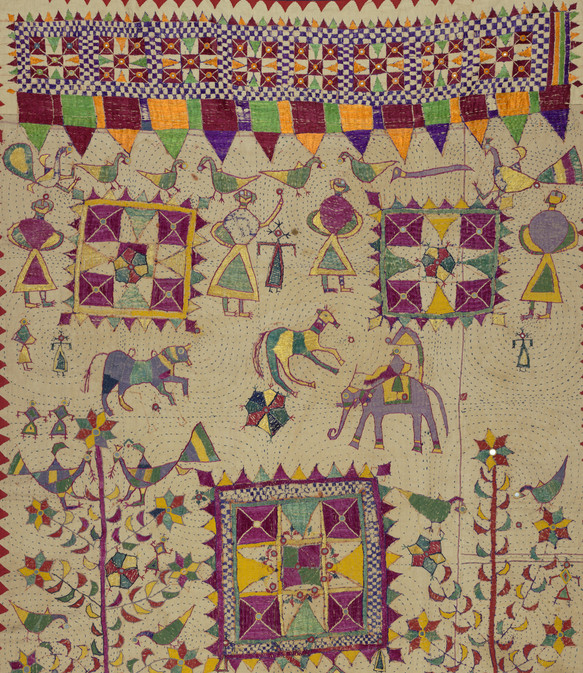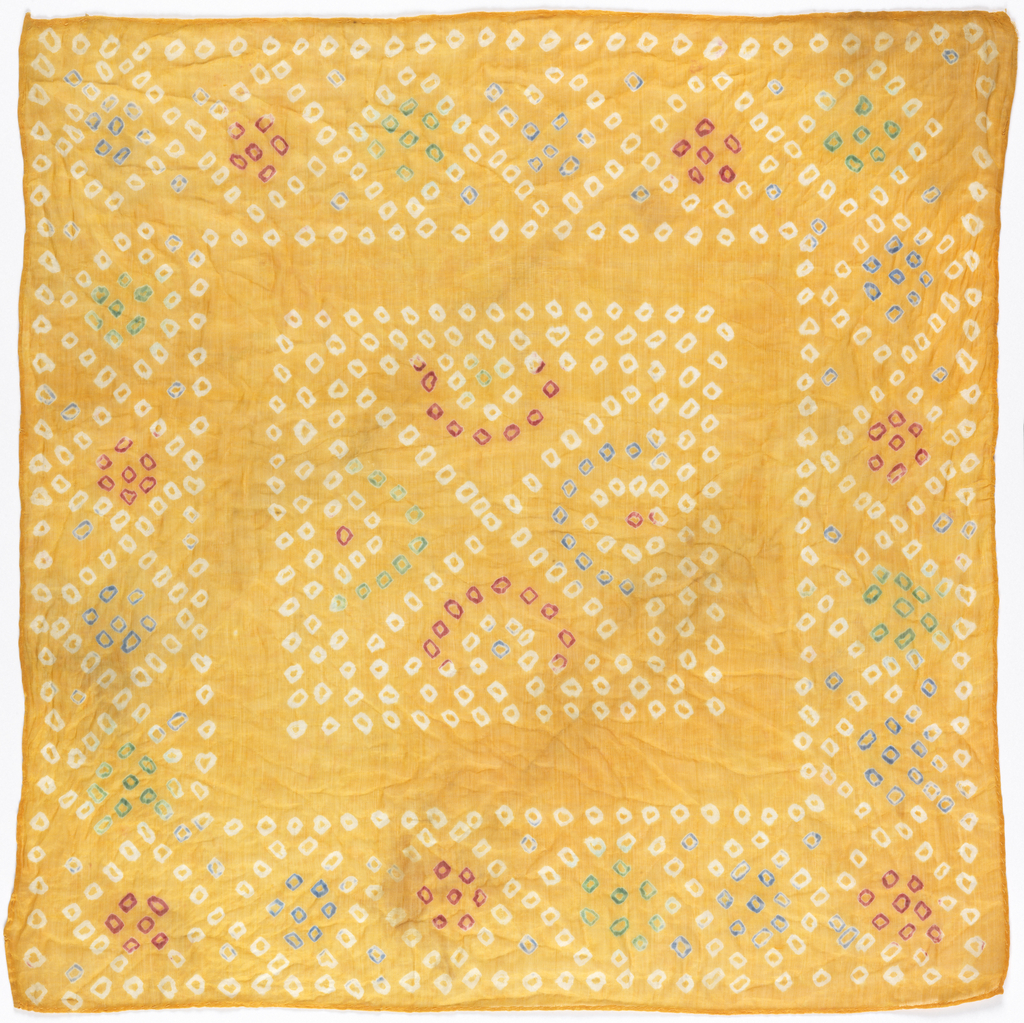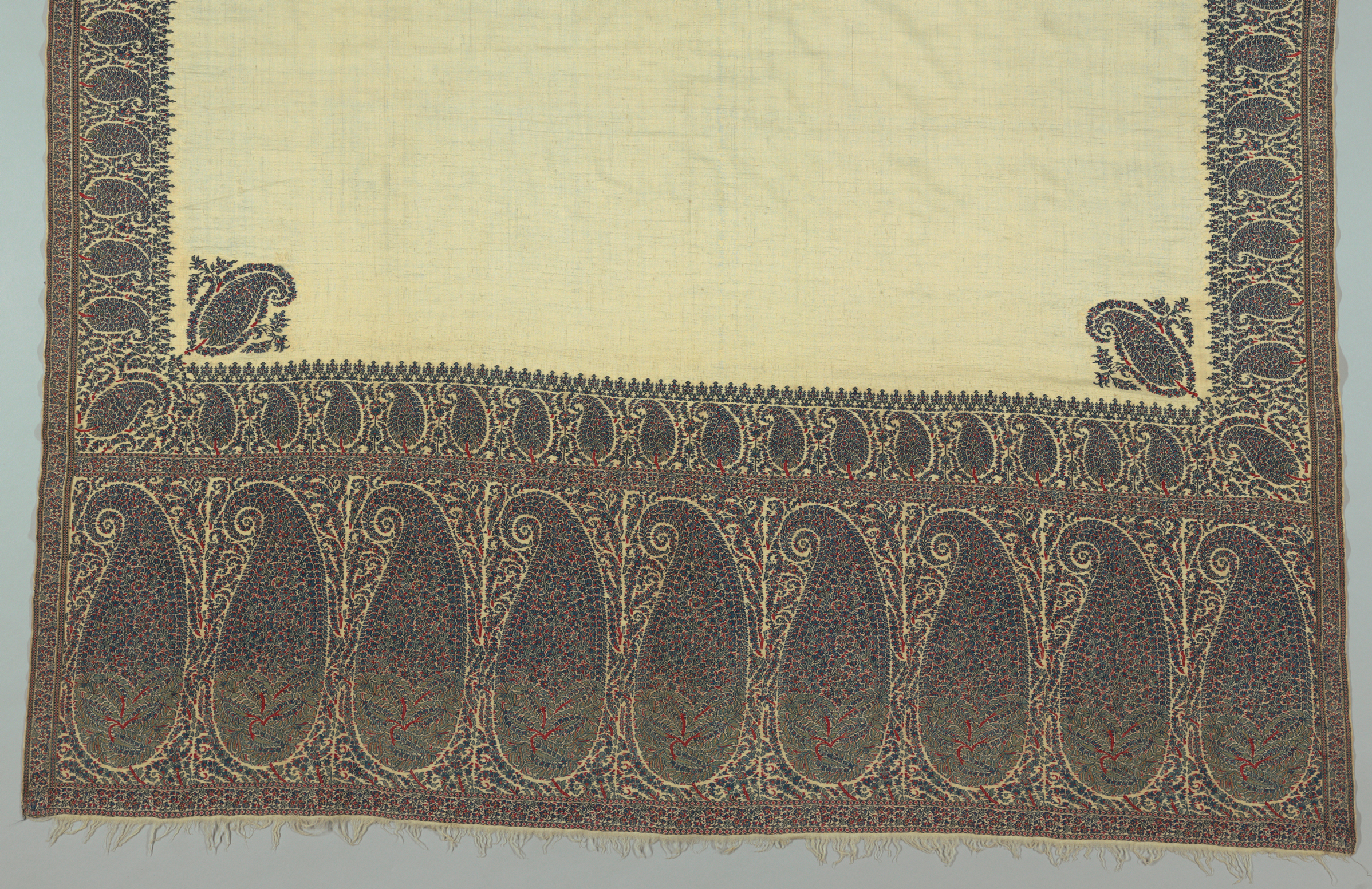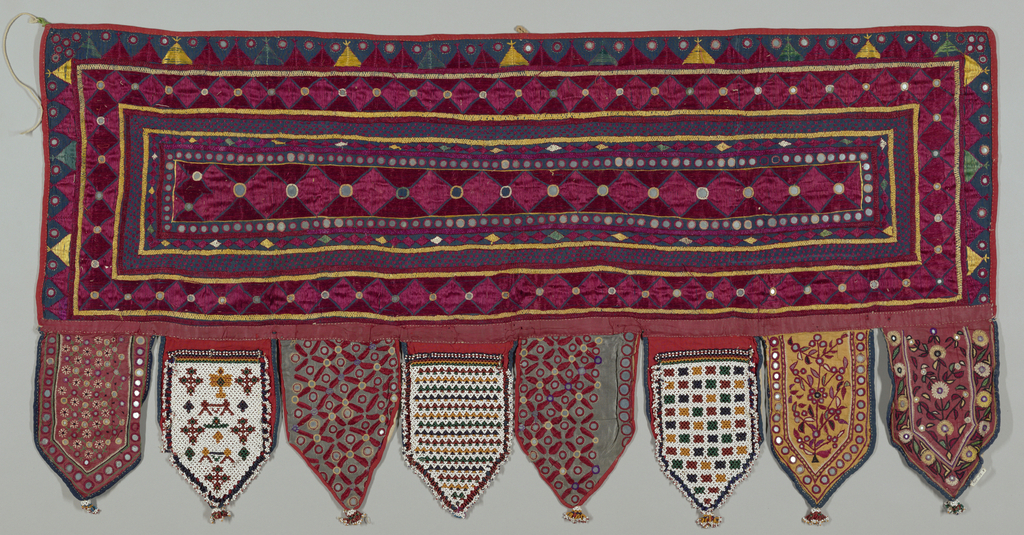Kantha is the practice of reinventing worn cotton fabric into household textiles in India and Bangladesh.
This bandana was made using a resist-dye technique called bandhani. A method of tie-dying, bandhani involves tying pieces of cloth with fine thread in order to block specific areas from the dye. The term bandhani derives from the verb bandhna in Hindi-Urdu (Urdu: باندهنا, Hindi: बानदहना), meaning “to tie” or “tying”. This piece was originally white and dyed yellow, while the...
In English, the common droplet-shaped motif found on Kashmir shawls is named after the Scottish town Paisley, which became famous for its imitation shawls in the first half of the 19th century. Locally, it is called boteh (Persian: بوته ; meaning “shrub”) or buta in the Indian subcontinent. Elsewhere on Object of the Day, Deputy Curatorial Director and Head of Textiles...
The toran is a frieze hanging named after a sacred gateway in Hindu, Jain, and Buddhist architecture. In the Gujarati communities of western India, a toran is hung above the doorway to the main room of the house as a sign of welcoming. This particular toran appears to be in the Kathipa style, recognizable by...



